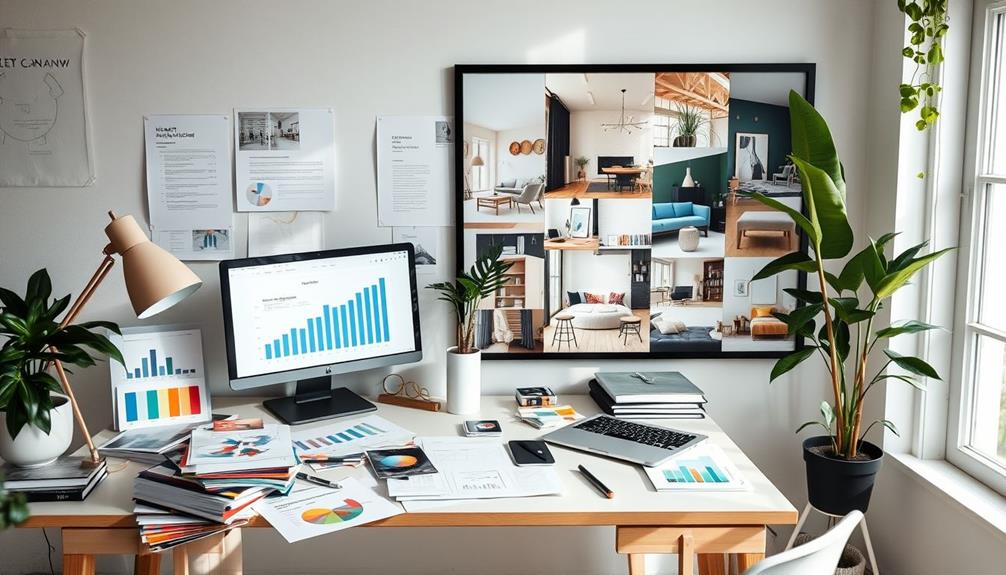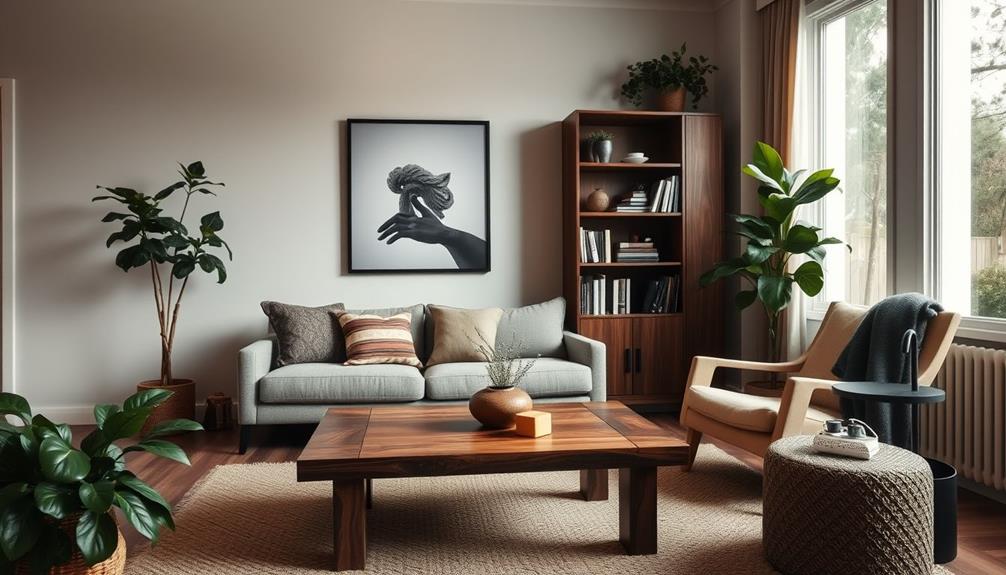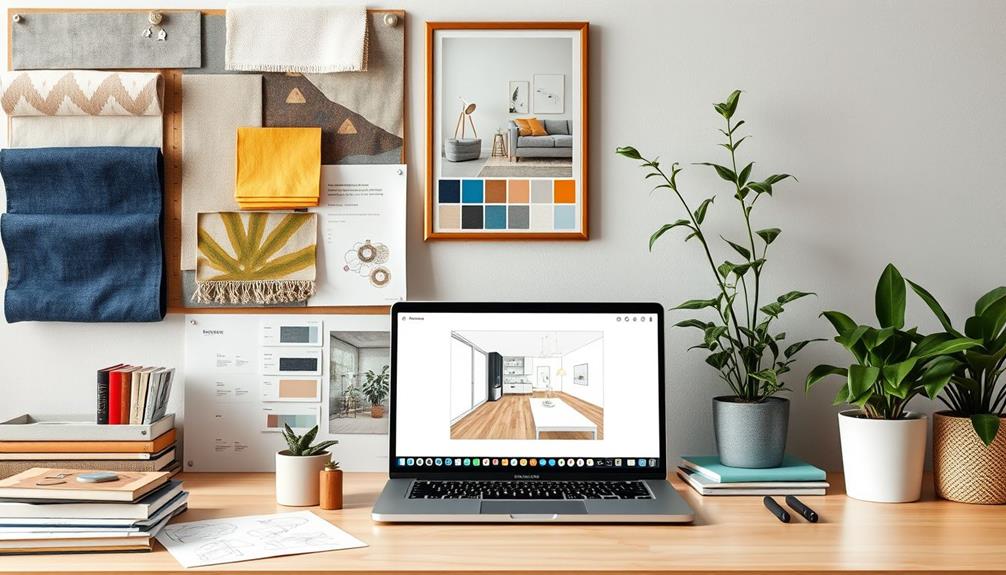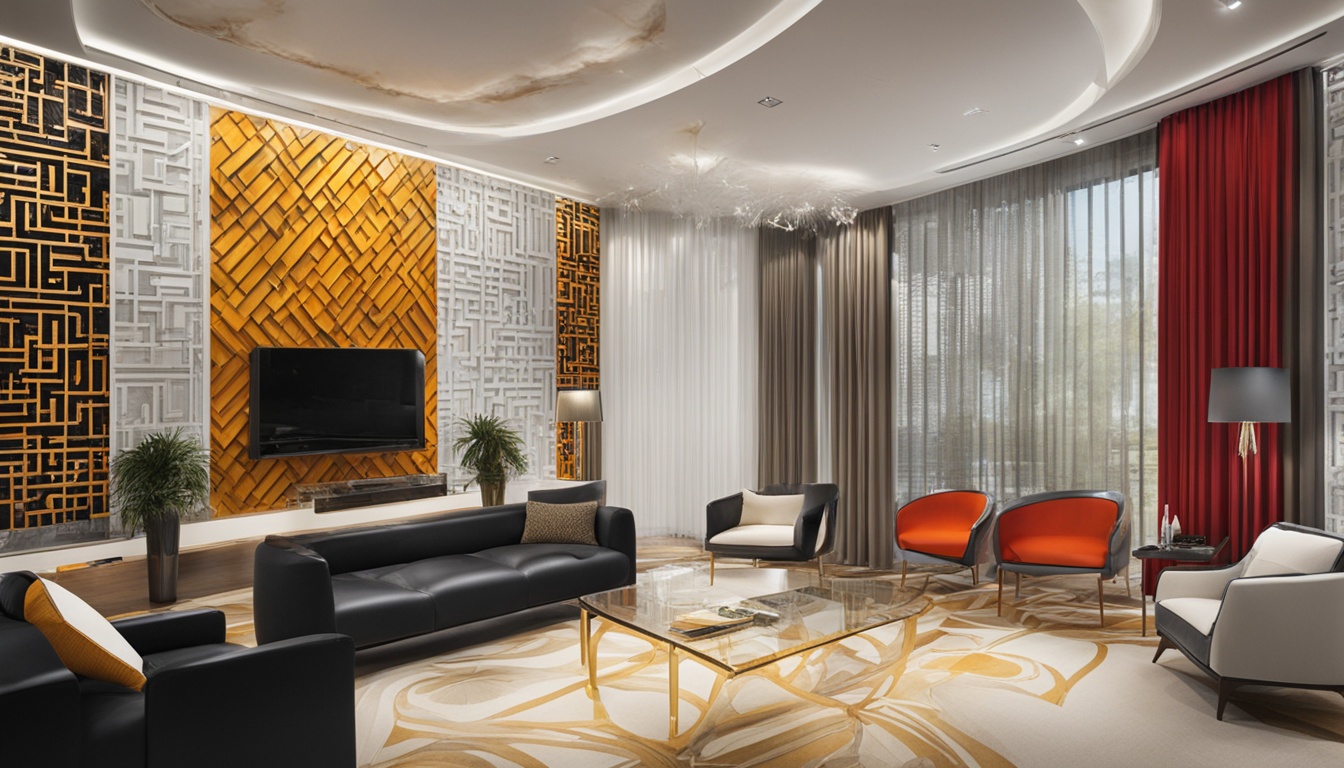To charge for your interior design services effectively, start by choosing a pricing model that suits your project. You can go with hourly rates, flat fees, or percentage-based fees, depending on your client's needs. Consider factors like your experience level, the scope of work, market demand, and local competition when setting your rates. Communicating clearly with clients about pricing and using visual aids can help manage expectations. Staying updated with market trends will also keep your pricing competitive. There are more strategies to explore that can enhance your pricing approach and client satisfaction.
Key Takeaways
- Determine your pricing model, such as hourly rates, flat fees, or percentage-based fees, based on project size and complexity.
- Assess local market demand and competitor pricing to establish competitive rates while ensuring profitability.
- Clearly outline your fees in a detailed contract, including any additional costs or markups to avoid misunderstandings.
- Use visual aids and regular updates to enhance client understanding of the design process and associated costs.
- Stay informed about industry trends and professional development resources to continuously refine your pricing strategies.
Pricing Models Overview
When it comes to charging for your interior design services, understanding the various pricing models is essential.
You've got several options to choose from, each with its own advantages, depending on the scope of the project and your clients' overall budget. One common method is charging an hourly rate, which typically ranges from $75 to $250, based on your experience and location.
Alternatively, you might consider charging a flat fee. This approach offers simplicity and transparency, often calculated as 25%-30% of the overall project budget.
For larger projects, pricing by the square foot can be effective, averaging between $5 to $17 per square foot, which helps clients estimate costs based on room sizes.
Factors Influencing Pricing

Choosing the right pricing model is just the beginning; several factors can greatly impact how you set your rates. Your experience level plays a significant role in determining your hourly rates, which can range from $50 to $250.
For larger projects, consider using square footage pricing, which averages between $5 to $17 per square foot. The scope of work is also essential; well-defined projects may benefit from a project fee, while smaller or complex ones might require hourly rates.
Market demand and local competition can influence your pricing structures as well. If demand is high, you might be able to charge more, whereas oversaturation may force you to adjust downward. Additionally, consider your overhead costs—these can eat into your profits if not factored correctly.
Many designers opt for percentage-based fees, typically ranging from 10% to 45% of the total project cost. This model appeals to high-end decorators but requires transparency regarding vendor invoices to maintain client trust.
Regularly evaluating these factors will help you refine your pricing strategy and guarantee it aligns with the value of your interior design services.
Client Communication Strategies

Effective client communication is essential for successful interior design projects. To guarantee clients understand how Interior Designers charge, start by outlining your pricing structure clearly in a detailed contract. This sets expectations and avoids misunderstandings regarding fees and deliverables.
When pricing your services, use visual aids like mood boards or project timelines to communicate design concepts and associated costs effectively. This enhances their understanding of the design work involved.
Maintain transparency by regularly updating clients on project management and any changes in scope. This builds trust and keeps clients informed throughout the total project.
Implement a feedback mechanism after key milestones to gather client input, which can considerably improve communication and align future services with their expectations.
Additionally, ascertain that any consultation fee, trade discounts, or markups are communicated upfront. This transparency fosters trust and prevents potential feelings of distrust regarding pricing.
Market Analysis Techniques

Understanding market analysis techniques is essential for setting competitive pricing for your interior design services. By conducting regular competitor analysis, you can research local interior designers' pricing models and service offerings. This helps you establish competitive rates and identify trends in the market.
Utilizing online tools can provide insights into average pricing for similar services in your region, allowing you to adjust your fees strategically. Client surveys are also valuable; they help gauge perceptions of value and pricing, refining your service offerings.
Here's a concise look at some analysis techniques:
| Technique | Description |
|---|---|
| Competitor Analysis | Research local designers' pricing models |
| Online Tools | Gather data on average regional pricing |
| Client Surveys | Understand client perceptions of your fees |
Analyzing your business growth metrics, like project volume and revenue, guarantees your pricing aligns with profitability goals. Additionally, staying updated on industry reports helps you adapt to emerging trends in interior design pricing, guaranteeing your services remain competitive in the market.
Professional Development Resources

To elevate your interior design career, tapping into professional development resources is essential. Joining professional organizations like the American Society of Interior Designers (ASID) can provide you with valuable insights into industry standards and best practices. This connection allows you to stay updated on trends and gain access to significant workshops.
Consider participating in business courses that focus on design practices. These courses often cover vital skills such as project management and pricing strategies, which can enhance your professionalism and increase your revenue streams.
Online learning platforms also offer courses tailored to client communication, helping you foster better relationships with your clients.
Attending industry workshops and networking events not only keeps you informed but also opens up networking opportunities that can lead to referrals and collaborations.
Don't overlook the value of coaching services, as they can offer personalized guidance to help you navigate challenges like pricing adjustments and client relations effectively.
Conclusion
In the world of interior design, pricing your services is like painting a masterpiece—you need the right colors and strokes to bring your vision to life. By understanding various pricing models, considering key factors, and communicating effectively with clients, you'll create a canvas that reflects your worth. Remember, it's not just about numbers; it's about building relationships and trust. So, take these insights and craft a pricing strategy that showcases your unique artistry.








